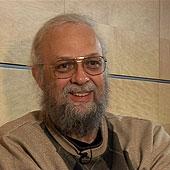Claude Berrou
Turbo Codes
A code for better communication
In 1993, a French engineer made an incredible claim. He reported at the Institute of Electrical and Electronics Engineers Conference in Geneva that he had come up with a coding method that could transfer data with almost perfect reliability at a rate breathtakingly close to the theoretical maximum known as the Shannon limit. These “Turbo Codes”, the researcher asserted, could be used to transmit data about twice as fast as other codes or, alternatively, use half as much transmitting power to achieve the same data rates.
Many experts at the conference scoffed at the claims and didn’t bother attending the engineer’s talk. “They said we must have made an error in our simulations,” recalled Professor Claude Berrou of the Ecole Nationale Supérieure des Télécommunications (ENST) de Bretagne in Brest, who invented Turbo Codes in the context of a research agreement with France Telecom.
Within a year, however, coding theorists were reproducing the French Engineer’s results. France Telecom acquired the patent, which was granted in 1995, while the inventor shared part of the licensing profits. Software technology provider Qualcomm signed the first licensing contract in 2003. To date, more than 30 large, international companies, including Broadcom and Freescale, have become licensees.
Any information, whether video, voice or data, is susceptible to changes when broadcast over a distance. This could be the result of multiple reflections on obstacles, or attenuations inherent to the broadcasting medium. Turbo Codes are a revolutionary form of error-correction coding. The technique consists of improving the decoding through an iterative process that gradually fine-tunes the result. To do this, information is simultaneously encoded in two different ways on the broadcaster level. Decoding is done in tandem, using first one, then the other elementary code.
The second decoding is what makes Turbo Codes so original. It contributes information components that can help improve the first processing of the data, which can then be used to restart the process. By cycling the decoding in this way, more and more errors can be corrected. This feature is in fact what gave the technology its name: the information exchanged between decoders during iterations improves performance, just as a turbocharger in a car couples the exhaust to the fuel intake to improve the engine performance.
Turbo Codes can be employed in any communication system where a significant power saving is required or the operating signal-to-noise ratio is very low. More than 500 million third-generation mobile phones in Europe, the USA and Asia use Turbo Codes. In 2003, the European Space Agency launched SMART-1, the first space probe with data transmission powered by Turbo Codes. The first NASA missions using Turbo Codes were the Mars Reconnaissance Orbiter and the Messenger.
The closing of the capacity gap between state-of-the-art codes and the Shannon limit could save space agencies tens of millions of euros on every mission because they could use lighter data transmitters with smaller batteries and antennas. For cell phone and other wireless technologies, turbo codes could reduce the number of dead spots in the world and lower the cost of service.
Berrou was born in Penmarc’h, France, in 1951. In 1978, he joined the French National School of Telecommunications in Brest, where he is currently director of research in the Electronics department. In November 2005, Berrou received the Marconi 2005 award for his discovery of Turbo Codes. The inventor has received many national and international awards for his invention, including SEE’s Ampere medal in 1997; one of IEEE’s Golden Awards for technological innovation in 1998; IEEE’s Haming medal in 2000, and the Science Academy’s France Telecom Grand Award in 2003.
Contact
European Inventor Award and Young Inventors Prize queries:
european-inventor@epo.org Subscribe to the European Inventor Award newsletterMedia-related queries:
Contact our Press team#InventorAward #YoungInventors



